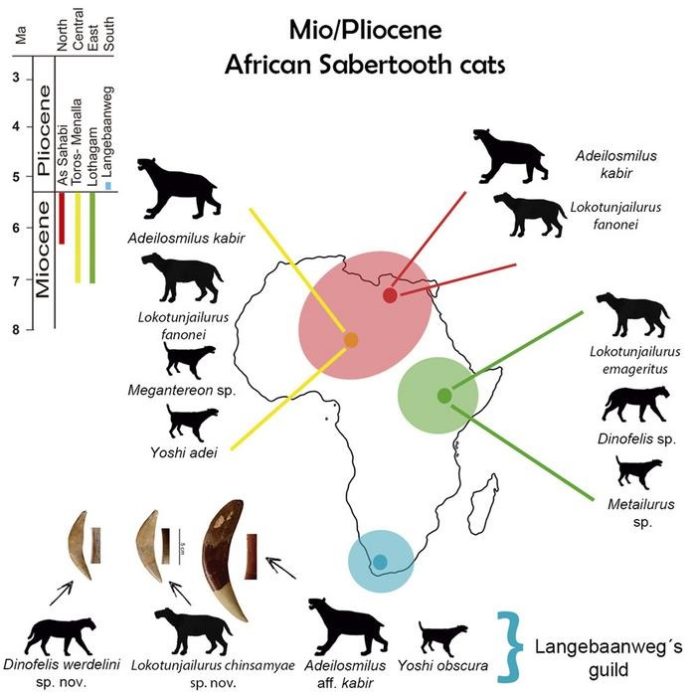
Imagine meeting cats with long, saber-like teeth who lived millions of years ago!
Well, some scientists have just found fossils of two new types of these sabertooth cats in South Africa.
These big cats lived around the same time when our earliest human relatives were just starting to show up.
These fossils were found in Langebaanweg, just north of Cape Town. This area is like a treasure trove of old fossils. The scientists published their findings in a journal called iScience on July 20.
Before this, scientists had an idea about where different kinds of sabertooth cats lived in ancient Africa.
But these new discoveries might change that. This research also gives us more information about what Africa was like millions of years ago.
Alberto Valenciano, a scientist who worked on this project, says that the sabertooth cats from Langebaanweg were not studied properly before. This new research is the first to really look at these cats.
The scientists talked about four species of sabertooth cats in the study, two of which were brand new.
These new species are called Dinofelis werdelini and Lokotunjailurus chimsamyae. Dinofelis cats have been found all over the world, including Africa, China, Europe, and North America.
The scientists thought they might find a new Dinofelis species, but finding a new Lokotunjailurus species was a surprise. Before this, these cats were only known in Kenya and Chad. This means these cats might have lived all over Africa between 5–7 million years ago.
To figure out how these cats are related to each other, the scientists looked at things like their teeth, jaws, and skulls. They used this information to draw a sort of family tree of these sabertooth cats.
From this research, the scientists also learned about what the environment was like when these cats were alive.
For example, the presence of big, fast cats called Machairodontini suggests that there were large open grasslands. But the presence of Metailurini cats tells us there were also forests.
So, it seems like the Langebaanweg area was a mix of forests and grasslands 5.2 million years ago. However, the fact that there were more Machairodontini species hints that this part of Africa was becoming more and more like an open grassland over time.
The scientists also think that this change in the environment might have made our human ancestors start walking on two legs. Interestingly, they found that the kinds of sabertooth cats in Langebaanweg were very similar to those in Yuanmou, China.
This could mean that the two places had similar environments or that there was a path for animals to move between the two places.
One of the scientists who worked on this study, Qigao Jiangzuo, says that finding more fossils could help us understand this better.
Another scientist, Romala Govender, who works at the Iziko Museums in South Africa, says there are a lot more fossils at Langebaanweg that need to be studied. So, these two new sabertooth cats are just the start!
Follow us on Twitter for more articles about this topic.
Source: Cell Press.



